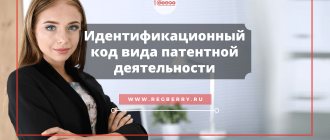UTII is used by many small enterprises whose activities comply with this taxation regime.
This tax combines several taxes at the same time, which saves time on filing reports for small and large businesses.
Payers of UTII are far from paying income tax, property tax for this activity, and VAT.
They are not familiar with this.
UTII
This is one of the types of special modes. The tax is classified as “regional”, since it begins to operate only on the basis of decisions of municipalities (as Moscow did and abolished in 14).
A special tax regime, and in particular a single tax, was introduced to simplify the accounting of small and micro enterprises. Since 2013, the choice of UTII occurs at the merchant’s own request. Both companies use UTII.
The use of UTII exempts your business from paying income tax, property tax and VAT; other taxes and contributions are paid without changes.
The tax rate is in no way aligned with your actual income. The exact name of UTII: a single tax on imputed income for certain types of activities (where the key word is “separate”). Therefore, let's figure out what kind of activity a businessman can choose to use UTII.
Features of “imputation”
According to the Tax Code of the Russian Federation, the types of activities for UTII for 2021 are listed in paragraph 2 of Article 346.26 of the Tax Code of the Russian Federation. Moreover, this norm provides a complete list of types of activities with UTII. There cannot be others. Moreover, this list is gradually being reduced every year. And from 2021 there will be no more types of activities falling under UTII. Because this special regime will be cancelled. For more information, see “When will UTII be cancelled: from 2021 or later?”
It must be said that the Tax Code of the Russian Federation does not separate the types of activities on UTII for an LLC in 2021 and the types of activities on UTII for individual entrepreneurs in 2021. The law provides a general list.
Please note that no types of activities in Moscow are subject to UTII in 2021. In the capital, this special regime has not been in effect for a long time. It is partly replaced by a trading fee.
List of UTII activities
The Tax Code of the Russian Federation contains a register of types of commercial activities that allow the choice of UTII.
Let's list them:
- Provision of household services;
- Veterinary Service;
- Washing, repair and maintenance of vehicles;
- Paid car parking (excluding penalties);
- Road transportation of freight and passenger transport (if this business has no more than 20 units of equipment);
- Stationary retail trade, trading hall 150 sq. m.;
- Retail trade, in which there is no trading floor and mobile retail trade;
- Catering, with a hall for visitors also up to 150 sq. m.;
- Catering service without a hall for visitors;
- Street advertising structures;
- Advertising on transport;
- Hostels, motels, hotels, boarding houses (with a total area of up to 500 sq. m.);
- Leasing of retail outlets for stationary retail (without a sales area), mobile retail outlets and catering facilities (without a service area);
- Leasing of land for retail and catering.
Of course, officially and in more detail, types of commercial activities are listed in the All-Russian Classifier (OKVED 2). But let’s try to decipher the list in our own words:
- This is the so-called KBO (consumer services plant, operating in Soviet times), this includes the repair and production of sewing and knitted products, repair and production of shoes, hairdressers, solarium, beauty salon, repair of all types of household appliances and equipment, saunas and baths, laundry, rentals, jewelry and funeral services. Now I have added to the list (minor repairs in the house “from nail to light bulb”). This category also includes glazing of balconies, installation of doors, windows and metal fences. Another direction: art schools, tutoring, organizing holidays and matinees, various clubs, sections and gyms. And also nannies, nurses, governesses (I repeat, the list is very long);
- Veterinary clinics and pharmacies;
- Points three through seven are probably self-explanatory;
- Catering includes: cafes, restaurants, bars, canteens, snack bars (bistros), cafeterias, culinary shops, including bakery products.
Above we have listed the complete list valid in the Russian Federation. However, at the regional level, certain positions are finally formed (by decision of the municipality); for clarification, you must contact your territorial tax authority (or administration).
Not all household services
It must be said that such types of “imputed” activities as household services represent a very large set of occupations and business activities. Therefore, local authorities for this category of services usually specify what types of activities UTII applies to. It can be:
- list of groups of household services;
- list of subgroups;
- certain types of services;
- individual household services.
Also see “Increasing the adjustment coefficient K1 for UTII from 2021.”
Conditions for using UTII
Let's consider the essential conditions for the transition to the UTII regime (the same for both individual entrepreneurs and enterprises):
- The UTII regime is used in this territory;
- The number of employees is no more than one hundred people;
- The type of activity presented is included in the decision of the local government;
- If you do not lease gas stations;
- If you are not working under a simple partnership or trust property management agreement.
The following additional requirements apply to the company:
- This cannot be an enterprise from the category of the largest tax payers;
- This cannot be an educational, health or social institution. provision;
- The percentage of contribution in the authorized capital of other companies is up to 25 percent.
There is one more restriction: you cannot apply UTII if you pay a single agricultural tax.
To summarize, if your commercial activity fits within this framework, then from January 1 of next year feel free to use the special imputed tax regime. However, remember that you only have five working days (from the date the store opened) to fill out an application for tax registration (after all, you do not want to pay a fine).
If your company combines several types of commercial activities:
- All types of activities require UTII, which means that physical indicators are taken into account separately for one type of activity;
- There are types of commercial activities that are subject to other taxes, which means that you need to maintain separate accounting records for different tax regimes.
If your company “works” under the authority of several tax inspectorates, UTII declarations must be submitted separately for all inspections.
Separate accounting
If an individual entrepreneur or organization is engaged in only one line of activity or several, but all of them fall under UTII, there will be no special problems taking into account income and expenses. But quite often entrepreneurs have to maintain so-called separate accounting. This is necessary if the organization is engaged in different types of activities, some of which are subject to UTII, while others are not. In such a situation, you need to keep records of both income and expenses separately.
There are usually no big problems with income, but expenses, which include, for example, salaries of administrative and managerial personnel, raise questions. How to calculate income tax if the staff is involved in managing all types of activities? And according to the law, the salaries of employees employed in imputation are not taken into account as expenses when calculating income tax. The answer is both simple and complex: the salary of such employees must be divided into two parts, one of which will relate to UTII, and the second to the simplified tax system or OSN. At the same time, this must be done in proportion to the shares of income from different types of activities.
The same rules apply when calculating property tax and VAT (they are also calculated based on that part of the profit that is received from activities that do not fall under UTII).
Calculation of UTII
The formula for calculating tax is not difficult: the tax base multiplied by the tax rate. At the same time, the tax base consists of a physical indicator multiplied by the basic (imputed) profitability.
The tax rate is 15%, but in 2015 legislators introduced an amendment, allowing the tariff to be reduced to 7.5% at the local level (to be honest, I have never heard of anyone taking advantage of this right). The basic profitability is determined by the type of your business activity (see “Can you apply UTII?”).
The tax base is also specified by coefficients K1 and K2. The K1 coefficient, called the deflator, is approved at the state level. The K2 coefficient is influenced by the type of services provided, population size, occupied area, seasonality, number of seats, product range, etc., and is established by decision at the local level.
When calculating, it is permissible to reduce the amount of tax by insurance premiums from the payroll of employees directly engaged in commercial activities for which you pay UTII (but only 50% of the tax, even if the amount of contributions is much larger).
The illustrations are clearer and simpler:
Example #1:
- retail sale of alcohol;
- sales area 50 sq. m.;
- Omsk city;
- accrual from payroll RUR 12,500;
- this year.
Let's calculate the amount of tax for the quarter: UTII = (1800*1.915*1*4*50*15%) -12500, the total amount of tax for the reporting period is 90,640 rubles.
Example #2:
- bar;
- sales area 20 sq. m.;
- Achair;
- this year.
Tax calculation: UTII=1000*1.915*0.7*4*20*15%, total 16,086 rub.
So, the reporting period of time for UTII is considered to be a quarter, so declarations are submitted based on the results of the quarter before the 20th day of the month following the reporting period of time. The declaration form is easy to understand.
Contains the following sections:
- “Title page”, it indicates such official data of the enterprise (IP), such as: TIN, KPP, full name of the director or entrepreneur, full name of the company, legal address, contact phone number, reporting period, code of the tax office where the declaration is submitted;
- The second section, it contains basic information on the physical indicators of your divisions (or a single point), from this section we find out the type of activity of the enterprise (OKVED code), the full actual address of the division, its code based on the All-Russian Classifier (OKTMO), as well as the size basic profitability, coefficients K1 and K2, in essence, physical indicators and tax calculation for one specific address;
- The first section contains summary data of the calculated tax for a separate OKTMO; if this is the only point in this area, the data of the first and second sections will coincide;
- The third section is a summary of information on the entire declaration submitted to this Federal Tax Service (if the business is conducted at only one address, the tax amount in sections 1, 2 and 3 is the same), in this section you show the entire amount of calculated tax, the amount of insurance premiums that reduce tax and the final amount of UTII payable.
- The fourth section (which will need to be completed starting from the first quarter of 2021) is entirely devoted to cash registers. The section includes data on the name of the model, its serial and registration number, the date of registration with the tax authorities, and the cost of the device itself.
Payment of the single tax by the 25th day of the month following the reporting quarter.
Responsibility
An offense in this area is an unlawful act committed by a person for which liability is provided under the Tax Code of the Russian Federation. Responsibility for a guilty act occurs for individual entrepreneurs, LLCs and other legal entities that violate the law.
Basically, liability comes in the form of imposing a special sanction on the culprit. This is a monetary penalty, the amount of which is established by the Tax Code of the Russian Federation.
The amount of the fine depends on what violations of the law occurred:
1. Failure to comply with the registration algorithm with the tax authority - 10,000 (Article 116, clause 1 of the Tax Code of the Russian Federation).
2. Work of an entrepreneur without registration - 10% of the income received, but not less than 40,000.
3. Failure to provide reporting documents – 5% of the fee, which must be reflected in the declaration for each month of delay in filing, but not more than 30% and less than 1000 rubles (p. 119, clause 1).
4. Failure to comply with the mechanism for transferring the declaration.
5. Failure to comply with accounting procedures. accounting. Moreover, here the amount of the fine depends on how many times the entrepreneur was caught for this particular offense:
- 1 time – 10000;
- 2 times a year – 30,000.
6. Failure to pay the fee to the Russian budget:
- with intent – 20% of the amount of arrears;
- without it – 40%.
The most common violations by payers under the Code of Administrative Offenses:
- Delay in reporting deadlines – Art. 15.5 Code of Administrative Offenses – from 300 to 500 rubles.
- absence in the Federal Tax Service of papers that are necessary for supervision of the economic activities of a particular person - from 300 to 500 rubles (Article 15.6 of the Administrative Code);
- incorrect accounting - Art. 15.11 Code of Administrative Offences, fine from 5 to 10,000, repeated – from 10 to 20,000.
To pay penalties, entrepreneurs must know the UTII Code of Tax Code.







